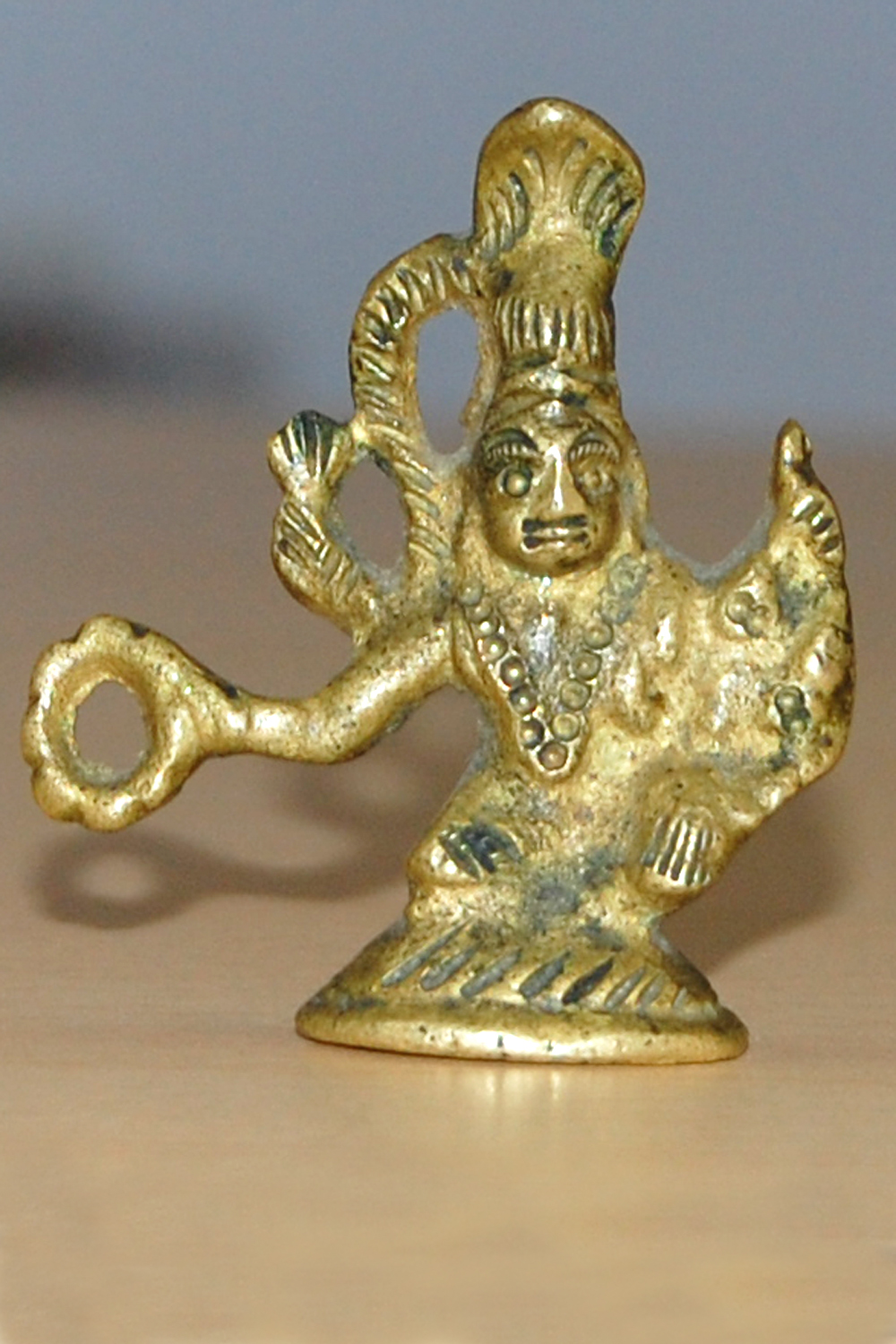
The following has been revealed to us by two retired CIA agents who wish to remain anonymous
The loss of a small 47 gm ancient Hindu brass-like metal idol of extreme antiquity called the Kalpa Vigraha has caused the American Central Intelligence Agency considerable anxiety. This unusual disclosure was made recently by a retired CIA agent on condition of absolute anonymity.
Firstly, what was the importance of this idol; what was the CIA doing with an ancient Hindu relic; and why the angst?
The story begins almost half a century ago. A heavy chest containing the idol was reportedly given to CIA officials for safekeeping at Lo Monthang (called "Mustang" in CIA files) by a Tibetan monk accompanied by Khampa bodyguards sometime in 1959-60. The monk apparently related to the CIA officials the importance of the chest and its contents. A curious CIA official meticulously wrote down the details of what the Buddhist monk told them about the chest and its contents. Why he thought it important to record the Buddhist monk's story is anybody's guess. But it also appears that the Americans were initially not quite impressed with the quaint values attached to objects of Oriental worship at that time when their priority was conducting a guerrilla war against the Chinese forces advancing into Tibet.
In the same week that the CIA officials received the chest a skirmish erupted with Chinese forces in which the Tibetan monk and his guards were killed. The CIA officials not knowing what to make of the curious chest loaded it onto an aircraft and had it sent to a secret airbase in India, later transporting it to Camp Hale, a now-abandoned Army base near Vail, Colorado. A few weeks later the chest wound up at a CIA store-room in Washington DC labeled "ST Circus Mustang-0183".
Many months would elapse before someone in the CIA decided to take an interest in the chest and its contents. A strange manuscript found inside and the unusually age-worn chest coupled with its noticeably unique design prompted them to conduct a radiocarbon test of the timber with which the chest was made. The results given to them by the University of California Radiation Laboratory, Berkeley astounded the CIA officials. The antiquity of the worn-out wooden chest and the idol was mind-boggling to say the least. It did not belong to this "yuga" or epoch on the Hindu time scale just as the monk had claimed. That is to say, it belonged to a period called the Dwapara yuga, making it the oldest human artifact in existence. Radiocarbon (C14) dating conducted by the University of California Radiation Laboratory on the heavy 9-inch thick timber sides and lid of the chest in which it was discovered arrived at readings that indicated a period around 26,450 BCE. That would make it over 28,450 years old today, and about 23,300 years older than the legendary Hindu Kurukshetra war. The idol was also tested by experts who concluded that it was the oldest Hindu idol in existence. None of the known ancient excavated civilizations of history – Egyptian, Mesopotamian or Indus Valley existed before 6000 years ago.
The Kalpa Vigraha idol was reportedly found placed inside this heavy metal-lined wooden chest with a socket-and-pivot hinged lid and an ancient loop-and-rod lock assembly. The chest itself presented a curiosity, as the space within the box was barely 8 X 8 X 8 inches while the timber pieces used to construct all its five sides was about 8 inches thick each! The timber of which the lid of the chest was made also measured about 6 inches in thickness. The teak-wood timber was further protected by a 1-inch thick bronze-like alloy plate on all sides which despite severe external corrosion had preserved the teak-wood of the box to a fair extent. The metal plate appears to have been riveted into the teakwood with nails of some similar metal alloy. Though many rivets were missing, the metal casing held well. The appearance of the chest suggested that it might have lain buried for a considerable period of time, though scrape-marks from attempts made to clean the corrosion on the outside were visible.
Corrosive salts or dampness had not crept into the chest despite its age, though some degree of natural oxidation and decay was noticed in the contents of the chest which included a manuscript written on wooden slats and the small brass-like crude metal idol. The old pre-Rigvedic Sanskrit-type manuscript was translated by the CIA with difficulty. In fact it reportedly took two long years to decipher, employing experts including some Indian and Nepalese. They concluded that the language belonged to the proto-historic period of Hinduism when it was thought no language existed and that the Vedas were being passed down orally. The manuscript appeared to be something akin to Sanskrit, but not quite anything any archaeologist or historian had ever encountered before. The manuscript mentioned the name of the idol – "kalpa maha-ayusham rasayana vigraha" abbreviated in CIA files to "Kalpa Vigraha."
read complete article at http://theunexplainedmysteries.com/kalpa-vigraha.html

No comments:
Post a Comment